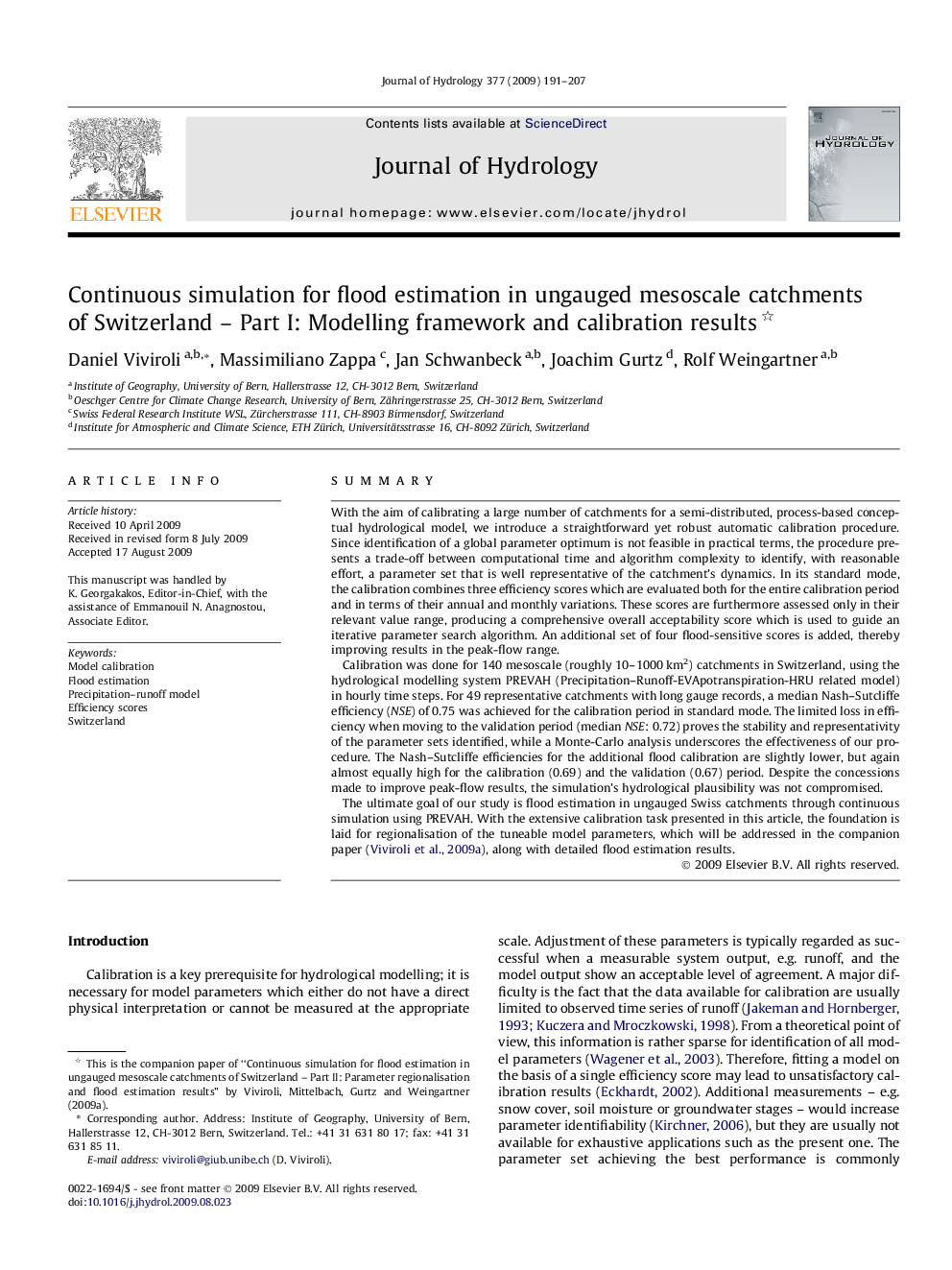| Article ID | Journal | Published Year | Pages | File Type |
|---|---|---|---|---|
| 4578544 | Journal of Hydrology | 2009 | 17 Pages |
SummaryWith the aim of calibrating a large number of catchments for a semi-distributed, process-based conceptual hydrological model, we introduce a straightforward yet robust automatic calibration procedure. Since identification of a global parameter optimum is not feasible in practical terms, the procedure presents a trade-off between computational time and algorithm complexity to identify, with reasonable effort, a parameter set that is well representative of the catchment’s dynamics. In its standard mode, the calibration combines three efficiency scores which are evaluated both for the entire calibration period and in terms of their annual and monthly variations. These scores are furthermore assessed only in their relevant value range, producing a comprehensive overall acceptability score which is used to guide an iterative parameter search algorithm. An additional set of four flood-sensitive scores is added, thereby improving results in the peak-flow range.Calibration was done for 140 mesoscale (roughly 10–1000 km2) catchments in Switzerland, using the hydrological modelling system PREVAH (Precipitation–Runoff-EVApotranspiration-HRU related model) in hourly time steps. For 49 representative catchments with long gauge records, a median Nash–Sutcliffe efficiency (NSE) of 0.75 was achieved for the calibration period in standard mode. The limited loss in efficiency when moving to the validation period (median NSE: 0.72) proves the stability and representativity of the parameter sets identified, while a Monte-Carlo analysis underscores the effectiveness of our procedure. The Nash–Sutcliffe efficiencies for the additional flood calibration are slightly lower, but again almost equally high for the calibration (0.69) and the validation (0.67) period. Despite the concessions made to improve peak-flow results, the simulation’s hydrological plausibility was not compromised.The ultimate goal of our study is flood estimation in ungauged Swiss catchments through continuous simulation using PREVAH. With the extensive calibration task presented in this article, the foundation is laid for regionalisation of the tuneable model parameters, which will be addressed in the companion paper (Viviroli et al., 2009a), along with detailed flood estimation results.
